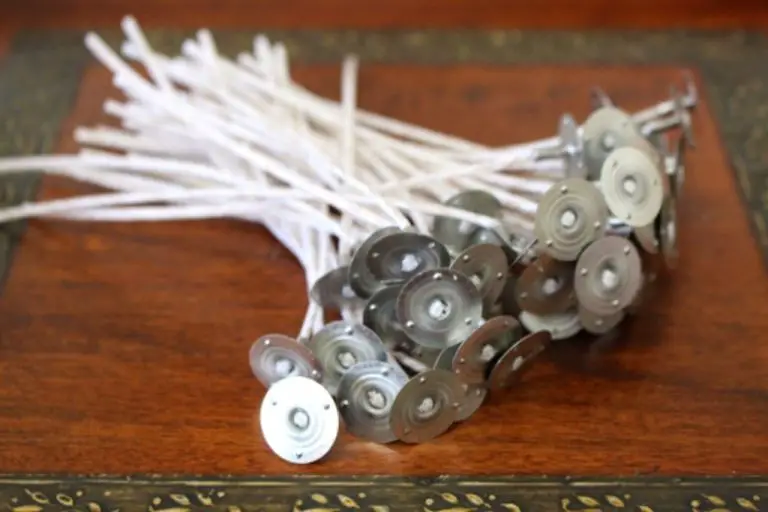How Many Candles Are On A Catholic Altar?
Catholic altars are central to the celebration of the Mass and represent Christ as the sacrificial victim. They are consecrated with holy oils and contain relics of saints, symbolizing the unity between the Church Triumphant in heaven and the Church Militant on earth.
The altar is covered with linens and adorned with various appointments, including candles, crucifixes, tabernacles, and flowers. Each element carries spiritual meaning and directs attention to the sacrament of the Eucharist.
Candles in particular have been part of Christian worship since the earliest centuries. Their light represents Christ as the Light of the World and serves as a symbol of the Christian’s faith and vigilance.
Types of Candles
There are a few different types of candles commonly used in Catholic churches.
Altar candles are tall candles placed on or around the altar during Mass and other liturgical celebrations. They are typically long-burning taper candles made of beeswax. Altar candles must be made of at least 51% beeswax according to Canon Law.
Votive candles are small candles that worshipers can light themselves. They are usually in glass containers and placed in candle holders called votive candle stands. Votive candles are generally made of paraffin wax and have a shorter burn time than altar candles.
Candlesticks, candelabras or menorahs are candle holders used on or near Catholic altars. They can hold altar candles, votive candles, or candles used in other rituals. Candlesticks are usually made of metal such as gold, silver, brass or iron.
So in summary – altar candles are large taper candles used during services, votive candles are small candles lit by worshipers, and candlesticks are the holders for either type of candle.
Number of Altar Candles
The number of candles placed on a Catholic altar typically follows one of these common arrangements:
- 2 candles – One on each side of the altar
- 4 candles – Two on each side of the altar
- 6 candles – Two on each side of the altar, plus one at each corner
- 7 candles – Six around the altar, with one in the center
Having an even number of candles is most common, with arrangements of 4 or 6 candles being the most prevalent. The 2 candle arrangement is more minimal, while using 7 candles can create a fuller, more ceremonial effect.
Symbolism of the Number
The number of candles on a Catholic altar typically holds symbolic meaning. The most common numbers are 2, 4, 6, or 7 candles. Each number has a particular significance:
Two candles represent Jesus Christ, as both fully human and fully divine. The two natures of Christ are symbolized by the two candles on either side of the altar.
Four candles represent the four Gospels of Matthew, Mark, Luke and John which illuminate the teachings of Jesus Christ. The four directions of the earth are also signified by the four Gospel candles.
Six candles can represent the six days of creation, as found in the Book of Genesis. The six candles recognize God as the creator of the universe.
Seven candles symbolize spiritual perfection or completion. The number seven often represents wholeness or totality in the Bible. The seven candles signify the fullness of God’s grace shining forth.
Placement
The altar candles are placed on or around the altar in a Catholic church. There are a few common placements:
- On the altar itself, either on tall candlesticks or low stands
- On the gradine behind the altar
- On the retable (the shelf-like structure built on or behind the altar)
- Suspended above the altar on large hanging candle fixtures
The most traditional placement is to have the altar candles on the altar itself. Usually there will be a crucifix placed between the candles on the altar. Some modern churches may have more unique or artistic placements like suspending the candles above the altar.
Regardless of the exact placement, the altar candles are positioned in a central, prominent location in clear view of the congregation. This allows their light to illuminate the altar and sanctuary area.
Colors
Candles on Catholic altars often come in various colors that have symbolic meanings. Here are some of the most common colors and their significance:
White – White symbolizes purity, innocence, holiness, and virtue. It is used for major feast days and solemnities.
Red – Red symbolizes the blood of martyrs and also represents fire and love. It is used for Pentecost and feasts of apostles, evangelists, and martyrs.
Green – Green represents hope, growth, and life. It is used during Ordinary Time.
Violet – Violet symbolizes penance and humility. It is used during Advent and Lent.
Rose – Rose represents joy. It can be used on the third Sunday of Advent and fourth Sunday of Lent.
Gold – Gold symbolizes triumph and glory. It is used for Christmas, Easter, and other major feast days.
While white is the default color, parishes can use colors symbolically to reflect different liturgical seasons and feast days.
Lighting the Candles
The altar candles are lit by either an acolyte, deacon, or priest before Mass begins. The candles are lit prior to the start of Mass to signify Christ’s presence on the altar during the Eucharist. Lighting the candles is one of the first rituals to prepare the altar for Mass.
The candles remain lit for the entire duration of the Mass. They are extinguished after the celebration once the Eucharist is over. Lighting the candles marks the beginning of Mass, while extinguishing them marks the end.
On special occasions, the candles may remain lit even after Mass for sacred celebrations. For example, altar candles stay lit after Midnight Mass on Christmas Eve and remain so until after the Mass on Christmas Day.
Uses of Altar Candles
Altar candles are used during important Catholic rituals and ceremonies. They play a central role in the celebration of Mass, providing light on the altar where the Eucharist is consecrated. At least two candles must be lit for Mass, though some churches choose to light more. The candles are lit shortly before Mass begins and extinguished after the celebration.
Candles on the altar signify Christ as the light of the world. They also represent the divine presence and loving sacrifice of Christ. Throughout the Mass, the flickering candlelight creates a peaceful, prayerful setting. The altar candles remain lit even if electric lights are turned on, to preserve the symbolism.
In weddings, a unity candle is often placed on the altar alongside the other candles. The bride and groom light this candle together to signify the joining of their lives and faiths. Altar candles also burn during funerals and other sacramental ceremonies to honor the deceased and connect their soul to Christ’s light.
Whether in joyous celebration or mourning, the altar candles unite the community in prayer and direct their focus toward God’s presence. Their glow reflects the light of Christ shining on each important event.
History
The use of candles on Catholic altars dates back to the earliest centuries of the Church. In the catacombs where early Christians gathered to celebrate Mass, candles and oil lamps provided necessary light in the dark underground chambers. Over time, candles became an integral part of the Mass and liturgical celebrations.
In the early Church, altar candles were commonly made of beeswax to symbolize Christ’s purity and the work of the Church. Beeswax candles were expensive and considered precious offerings on the altar. Later on, other materials like tallow, a rendered form of beef or mutton fat, became more commonly used as they were more affordable.
By the 11th century, rules emerged requiring a minimum of two candles to be placed on or near the altar during Mass. This requirement for multiple candles represented Christ as the light of the world, as well as his presence in the sacraments on the altar. The number of required candles gradually increased over the centuries.
Today, most Catholic parishes use six candles on the altar, though some use four or even eight. The six candles are typically arranged in a straight line behind the crucifix or in two groups of three on either side. They are lit for Mass and other liturgical celebrations, continuing an ancient tradition of honoring Christ as the light who illuminates the Church and the world.
Conclusion
The number of candles on a Catholic altar has symbolic meaning and serves practical purposes. Key points include:
- There are typically 6 candles on the main altar, though 2, 4, or 7 may also be used.
- The candles represent Christ as the Light of the World and his presence on the altar.
- They are placed in graduated height on either side of the altar cross or crucifix.
- The color of the candles varies by liturgical season – white, red, green, purple, pink, or gold.
- Lighting the candles is part of preparing the altar for Mass and signifies Christ’s presence.
- Candles provide light and ambiance for services and rituals at the altar.
- Their use on altars traces back to the earliest centuries of the Church.
In summary, altar candles are both practical and profoundly symbolic in the Catholic tradition.



